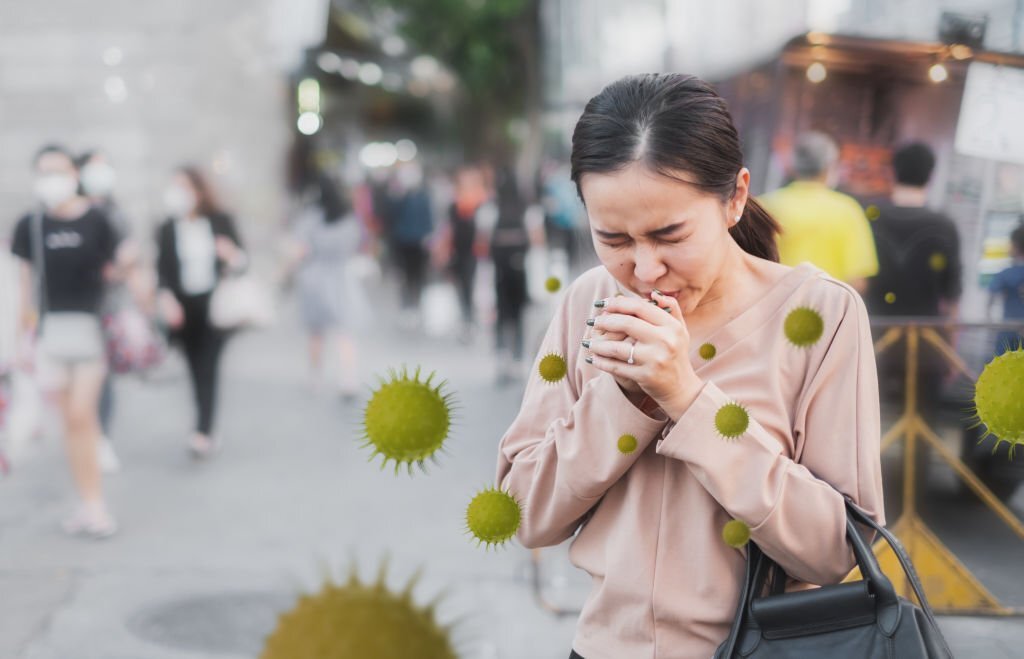
Article by Lalita Panicker, Consulting Editor, Views and Editor, Insight, Hindustan Times, New Delhi
The COVID-19 Response Mechanism (C19RM) of the Global Fund has initiated the process to award US$320 million to various countries worldwide. Since December 2022, the Fund has awarded US$547 million in additional funding to 40 countries. The latest tranche makes for a total of approximately US$867 million. https://reliefweb.int/report/world/global-fund-provides-us867-million-additional-funding-pandemic-preparedness-and-response
At the tail end of a seemingly unrelenting pandemic that has lasted three years, the world has been left with a devastated health care system painstakingly built up over the last 70 years. Even basic health care needs like infant immunization, leave alone treatment of diseases such as TB, have become difficult if not impossible to deliver in poorer and remote areas. The grants are geared towards correcting that imbalance supporting both the immediate COVID-19 response and broader pandemic preparedness, while strengthening the underlying health systems that have been down during the pandemic. This includes investments in disease surveillance, laboratory networks, community health worker networks and community-based organizations, medical oxygen and respiratory care systems, as well as the rollout of novel therapeutics to scale up test-and-treat programs in case of future COVID-19 surges. The total awarded for C19RM since 2020 now amounts to almost US$5 billion.
The Global Fund’s C19RM follows a country-led, inclusive, and demand-driven approach to ensure funding goes where it is most needed. Uganda is one such example of how the Global Fund partnership is making a very substantial contribution to address gaps in disease surveillance and strengthen national laboratory systems to reinforce their capacity to detect COVID-19 and other pathogens.
“From the start of the pandemic, the Global Fund took a leading role in supporting low- and middle-income countries like Uganda to scale up testing for the new virus, leveraging 20 years of experience in procuring diagnostics and investing in laboratory capacities and disease surveillance. Most recently in 2022, our strong surveillance systems enabled Uganda to detect the Ebola outbreak in a timely manner, respond and eventually control the outbreak in a record time of 69 days,” said Minister of Health of Uganda Dr. Jane Aceng.
Elsewhere, with a US$30 million investment from the Global Fund, the government of Indonesia and Genome Science Initiative established a nationwide network of facilities able to conduct whole genome sequencing to strengthen early diagnosis and treatment of deadly diseases including tuberculosis, COVID-19, cancer, metabolic disorders, brain diseases and genetic disorders. This funding has benefited organizations like the Center for Environmental Health Engineering and Disease Control in Batam, Indonesia, which today are at the forefront of fighting disease and preparing for future health threats.
The funds are being used to purchase new instruments and train laboratory staff to help ensure facilities across the country are able to harness the new technology and transform the country’s health system.
“Prior to the initiative launching, laboratory workers in Batam had to send samples 1,100 kilometres away to a laboratory in Jakarta to do genomic sequencing, and it would take more than two weeks to get results. Today, they are able to get this same result in less than five days, which is vital in deciding how to respond and manage the disease outbreak as early as possible. The initiative also enhances distributed laboratories capacities throughout the country for genomic surveillance and bioinformatics analysis,” said Minister of Health of Indonesia Budi Gunadi Sadikin.
As part of the process to make the second wave of awards totalling approximately US$320 million, the Global Fund has invited countries to express an interest in having their funding requests considered for inclusion in a potential Global Fund proposal to the Pandemic Fund, which has recently announced a call for proposals for US$300 million in funding. Since there is a strong overlap in the priority areas of investment for both C19RM and the Pandemic Fund, the Global Fund is exploring how to help countries minimize any extra work and maximize the synergies between investments funded from the different sources.
/////
In what could well be an ironic “storm before the lull” sort of statement, the Chinese government has declared a “decisive victory” in the battle against COVID-19, even as the figures show otherwise. Furthermore, the government is claiming it has wrought “a miracle in the history of human civilization” in successfully steering China through the global pandemic going on to assert that China’s death rate from the coronavirus was the “lowest in the world.”. https://www.theguardian.com/world/2023/feb/17/china-victory-covid-deaths-virus
The comments were made at a meeting presided over by President Xi Jinping on Thursday. The government said more than 200 million people had been treated for COVID.
China’s National Health Commission stopped publishing data on COVID cases and deaths on 25 December, after the government suddenly lifted the draconian zero-COVID policies that had restricted movement in the country for almost three years.
On 9 February, it said 83,150 people had died from COVID, which would be an unusually low rate for a country grappling with a wave of the Omicron variant. But there are many other indicators that suggest the virus has ripped through China since December, causing a far higher number of illnesses and deaths than the official data suggests.
Chinese authorities count only COVID deaths that happen in hospitals, an approach the World Health Organization says underestimates the true toll. There have been reports of doctors pressured to leave COVID off death certificates. And mass testing has largely been abandoned. The number of daily tests dropped from 150m on 9 December to 280,000 on 23 January. “We still don’t know how many were infected and how many died at home,” said Prof Jin Dong-Yan, a virologist at the University of Hong Kong.
Since December, hospitals and mortuaries have been overwhelmed with patients and bodies. Using modelling based on the age distribution and vaccination rates in China, Zhanwei Du and Lauren Ancel Meyers, of the University of Texas in Austin, estimate 1.5 million people died from COVID between 16 December and 19 January.
The US, whose population is 334 million compared with China’s 1.4 billion, has reported just over 1.1 million COVID deaths since the start of the pandemic. Europe, home to about 750 million people, has suffered 2 million deaths.
Drugs to treat COVID have become scarce. Pharmacists in several cities have reportedly been opening boxes of ibuprofen and paracetamol to split them into smaller batches in order to serve more customers.
Paxlovid, a medicine developed by Pfizer, has been particularly sought after, with prices rocketing on the illegal market. Agence France-Presse reported that one seller was asking for 18,000 yuan (£2,190) for a single box in January, as many desperate patients looked overseas to try to procure the drug.
In January, Xi expressed concern that domestic travel over the lunar new year holiday, when hundreds of millions of people travelled home, many for the first time in three years, could spread the virus. But the Chinese Centre for Disease Control and Prevention later said COVID cases peaked in late December, and the spread of the virus “did not rebound significantly” over the lunar new year.
Despite the possible large scale fudging of figures there appears to be an overall feeling of relief both within and outside the country after the Chinese leadership abandoned its disastrous “zero COVID” late last year. Within because it ended some of the world’s longest forced incarcerations and without since it has helped kick start a sluggish, even moribund, global economy.
////
The Indian government is likely to take strong action against the misuse of drugs by the e-pharmacies including their closure, news agency ANI said citing sources. The report said that the e-pharma companies’ model is problematic as it can be detrimental to patients’ health.
Recently, the Drugs Controller General of India (DCGI) served notices to illegal e-pharmacies selling medicines on the internet.
The notices were issued by DCGI on 8 February to the pharma firms and other online platforms in which they were asked to respond within two days or face strict action without any further notice on the sale and distribution of the drugs in the country.
According to the official sources from the India’s Health Ministry, e-pharmacies are violating various sections of the Drugs and Cosmetics Act of 1940.
Besides, the Central Drugs Standard Control Organisation (CDSCO) served notices to over 20 online pharmacies and online platforms, that includes some big players as well in the industry such as Tata1mg, Practo, Apollo, Amazon and Flipkart.
“The All Indian Origin Chemists and Distributors (AIOCD) was constantly alerting the Government that the Drug Acts, Pharmacy Act, and Other drugs related rules/orders, code of ethics, do not permit the sale of medicines on the internet and promotion of drug sales by advertising with discounts and schemes as it can be hazardous to the health of the public,” read a statement issued by the AIOCD. “In spite of all legitimate appeals, requests, meetings, and High Court orders of Delhi, corporate houses were operating illegally with financial power indulging in Predatory Pricing. Since the e-pharmacies started operating online sale of drugs crossing borders of states in the country, there has been a sudden rise has been a sudden rise in the availability of spurious drugs,” AIOCD further said.
It also said that online apps became easy to access narcotic drugs, pregnancy termination kits, antibiotics, and sedative drugs, and its interstate supply direct to patients, became very difficult to trace and track by state drug agencies.


